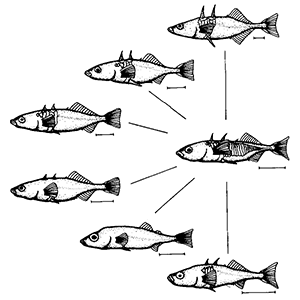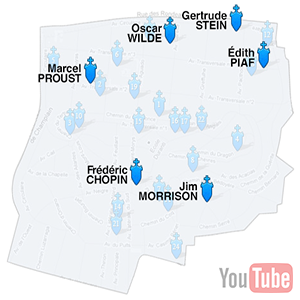The Venus Project is an organization that advocates American futurist Jacque Fresco’s visions of the future with the aim of improving society by moving towards a global sustainable social design that they call a ‘resource-based economy.’ Such a system incorporates sustainable cities and values, energy efficiency, collective farms, natural resource management and advanced automation, focusing on the benefits they claim it will bring to humanity.
The name of the organization originates from Venus, Florida, where its research center is located, near Lake Okeechobee. Within the center are ten buildings, designed by Fresco, which showcase the architecture of the project.
read more »
The Venus Project
Matching Hypothesis
The matching hypothesis is a popular psychology and social psychology theory, proposed by Elaine Hatfield and her colleagues in 1966, which suggests why people become attracted to their partner. It claims that people are more likely to form long standing relationships with someone who is as equally physically attractive as they are. This is influenced by realistic choices, desire of the match and good probability of obtaining the date.
In successful couples in which the partners differ greatly in physical attractiveness, it is likely that the less attractive partner has compensating qualities to offer. For instance, some men with wealth and status desire younger, more attractive women, and some women are more likely to overlook physical attractiveness for men who possess wealth and status.
read more »
Assortative Mating
Assortative mating is the phenomenon where a sexually reproducing organism chooses to mate with individuals that are similar (positive assortative mating) or dissimilar (negative assortative mating) to itself in some specific manner. In evolution, these two types of assortative mating have the effect, respectively, of increasing or reducing the range of variation (trait variance), when the assorting is cued on heritable traits. Positive assortative mating, therefore, results in disruptive natural selection, and negative assortative mating results in stabilized natural selection.
Assortative mating has been invoked to explain sympatric speciation (the process through which new species evolve from a single ancestral species while inhabiting the same geographic region). For some populations there are two different resources for which different phenotypes (genetic traits) are optimum. Intermediates between these two phenotypes are less favorable. It is then favorable if the organisms can recognize mates that are optimized for the same resources as they are themselves. If mutations that make such recognition possible appear, these will be selected for.
read more »
Cyanotype
Cyanotype [sahy-an-uh-tahyp] is a photographic printing process that gives a cyan-blue print. The process was popular in engineering circles well into the 20th century. The simple and low-cost process enabled them to produce large-scale copies of their work, referred to as blueprints. Two chemicals are used in the process: Ammonium iron(III) citrate and Potassium ferricyanide.
The English scientist and astronomer Sir John Herschel discovered this procedure in 1842. Though the process was developed by Herschel, he considered it as mainly a means of reproducing notes and diagrams, as in blueprints. It was Anna Atkins who brought this to photography. She created a limited series of cyanotype books that documented ferns and other plant life from her extensive seaweed collection. Atkins placed specimens directly onto coated paper, allowing the action of light to create a silhouette effect. By using this photogram process, Anna Atkins is regarded as the first female photographer.
read more »
Père Lachaise Cemetery
Père Lachaise Cemetery [peyr /luh-shez] is the largest cemetery in the city of Paris, France, and is reputed to be the world’s most-visited cemetery, attracting hundreds of thousands of visitors annually to the graves of those who have enhanced French life over the past 200 years. It is also the site of three World War I memorials. Notable residents include Georges Bizet, Maria Callas, Frédéric Chopin, Marcel Marceau, Jim Morrison, Marcel Proust, and Oscar Wilde.
The cemetery is on Boulevard de Ménilmontant. The Paris Métro station Philippe Auguste is next to the main entrance, while the station called Père Lachaise, on line 3, is 500 meters away near a side entrance. Many tourists prefer the Gambetta station as it allows them to enter near the tomb of Oscar Wilde and then walk downhill to visit the rest of the cemetery.
read more »






